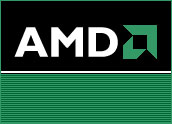
Low-cost general use PCs are becoming a reality with recent announcementsfrom the MIT Media Lab and AMD. Chipmaker AMD began peddling a US$299 PC designed for emerging markets at U.S. Radio Shack stores over the weekend.
AMD launched the the Personal Internet Communicator (PICs) in India about ayear ago with high hopes of connecting 50 percent of the world’s populationto the Internet by 2015.
Meeting Demand
While China and Turkey are awaiting the PIC’s arrival in the next fewmonths, AMD decided to test the U.S. market now. The company figured theremay be a demand for the sub-$300 computers with students and senior citizenswho don’t want to spend more than that on a traditional desktop computer.
Technology Business Research vice president Brooks Gray told TechNewsWorldthat AMD has to ask itself two questions in its quest to bring its low-costcomputing to the U.S. market. First, is it a profitable business model?Second, through what sales channels will it market the product?
“If AMD can’t bring the chip down to $20 and the operating system down to anequivalent price point, or slightly higher, then I think there are somelimitations here,” Gray said. “On the other hand, I can buy a pretty goodpersonal computer for $400 or less with a warranty.”
Anatomy of Low-Cost Computers
Solectron, Seagate, Samsung and Macromedia played an integral role in thedevelopment and manufacturing of the PIC. It is designed to withstand thepotentially harsh environmental demands of high-growth markets, which caninclude inconsistent power voltage, dust and dirt.
The PIC provides basic computing and Internet capabilities such as abrowser, e-mail, word processing and spreadsheet, and the ability to viewimages, multimedia files and standard format documents. It runs the WindowsCE operating system.
“My initial assessment is that AMD’s low-cost computer will have limitedtraction in U.S. markets,” Gray said. “I’m not sure if Windows CE providesthe functionality or the stability that consumers are looking for.”
Leveraging Open-Source Software
Analysts said AMD may have been better of leveraging an open-sourceoperating system and tools to simultaneously bring the cost down and offercustomers more functionality. That’s what MIT researchers did with their$100 laptops set to be distributed in emerging countries in 2007.
The $100 laptop will be a full-color, full-screen portable computer thatuses the cost-free Linux operating system. It will be rugged and powered bywind-up and other innovative sources of electricity for use in remoteplaces.
It will come enabled for wireless and cell phone Internet access, and haveplenty of USB ports to accommodate potential additional peripheral devicessuch as a printer. Its current specifications are 500 megahertz processorspeed, one gigabyte of memory, and an XVGA display.
Targeting Emerging Markets
Analysts said a $100 laptop is more attractive in any market than a $299computer. Two-hundred dollars is often seen as the critical point to gainingeconomies of scale across the electronics market.
“When you hit the $200 price point, you are looking at a much morereasonable level of discretionary spending in some of the emerging markets,”Gray said. “If I am really targeting the emerging markets, I am probablynot going to target them with a Microsoft platform. AMD needs to look muchmore closely at bringing some lower cost components into this if they wantto be successful in either market.”






















































The problem i see is that Mr. Negroponte and the porponents of these low cost computers are tagging a selling cost that sounds sexy but makes no economic sense. How will you manufacture, distribute, provide warranty, deliver, setup, pay tax, etc. and still be able to make it economically viable. Things cost money.